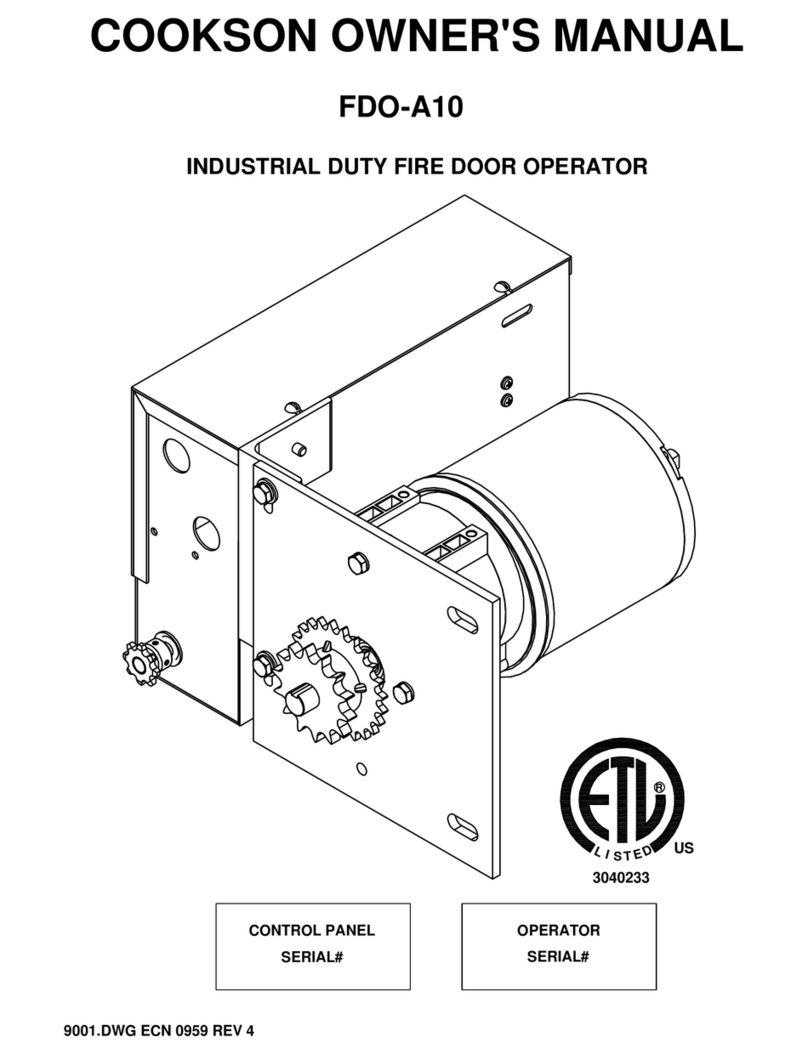
SPECIFICATION
Input Power*: 115VAC, 0.5A; 230VAC, 0.25A ; 24VAC, 0.5A; 24VDC, 0.2A
Alarm Dry Contact Rating: 24VDC, 0.08A, 5.16 ohms max line impedance
Lower Limit Microswitch Rating: 30VDC, 0.08A, 5.16 ohms max line impedance
Door Close Warning Power: 24VDC @Max. 0.23A, Resistive, Special Application (see
below)
Status Dry Contact: Rating: 30VDC/VAC, 2A, Resistive Load
Frequency: 50Hz or 60Hz
Release Pull: 50 lbs (22.7kgs)
Fuses: F1: 4A@250V, Fast-Act Type
F2: 3A@250V, Slo-Blo Type
*Input voltage [standby/full load**/start current]: 115VAC [0.5/0.6/1.1A], 230VAC [0.25/0.3/0.55A],
24VAC [0.5/0.8/1.8A] or 24VDC [0.2/0.4/1.8A].
**Full load current only required for optional warning device(s).
zMust install with UL approved fusible links.
z24V input power can be 24VDC or 24VAC or 24VDC from an approved UL1481 regulated power
supply.
z18-gauge wire recommended.
zFor “Indoor Dry” location use only.
zClose warning power is provided for less than a minute. Any fire Listed audible or visual device
may be used if the 24VDC input is powered by a UL1481 regulated power supply. When input
power is 115VAC, 230VAC or 24VAC, please connect the following compatible devices:
Bridgeport Fitting Inc Series 840P & 840T and Federal Signal Corp Model LP6 and Series LP3.
zNote: Door Close Warning Output is only functional when the box has input power.
INSTALLATION
Disconnect power supply before servicing.
WARNIN
-For “Indoor Dry” location use only. All wiring must satisfy the most current version of
NFPA72 – National Fire Alarm Code and the National Electric Code.
-18-gauge wire is recommended
2 Firefly IV MV






























